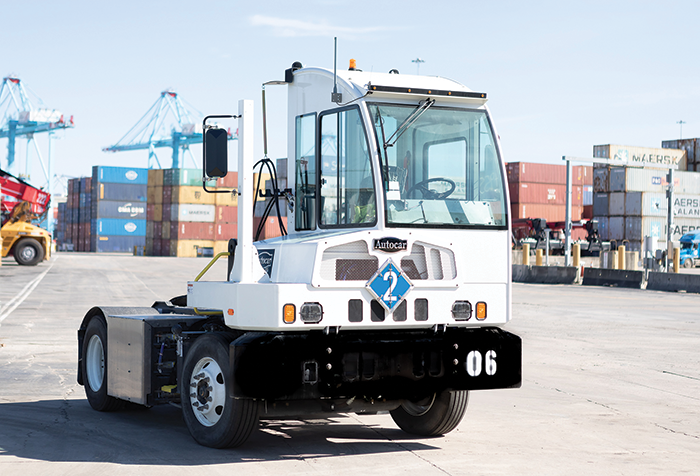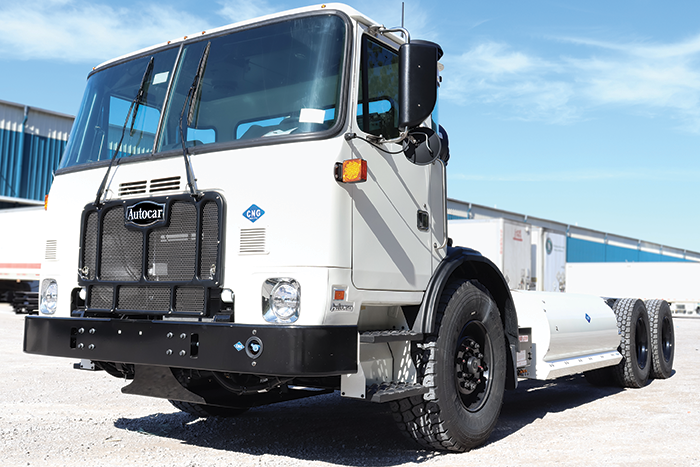Trying to predict what is ahead for the severe-duty trucking industry compares to looking into that Magic 8 Ball. Yet, we can be confident that severe-duty trucks will continue doing the dirty jobs, albeit a little bit cleaner, using alternative fuels.
By Tim Thornton
The “new normal” became the catchphrase of 2020, but the only thing consistent since then has been change. The traditional ways the OEM (original equipment manufacturers) industry used to plan for coming years went out the window. Today, it is all about adaptability. So how do you roll with the changes? We have continued to search proactively for innovative solutions to challenges as they arise. With the status quo gone, if we want to take a stab at what is on the horizon for the industry, we need to really understand what makes a Class 8 truck and how it is evolving.
Class 8: OTR or Vocational
Many heavy-duty truck manufacturers build trucks to a standard spec. As a result, they build their over-the-road (OTR) trucks and their vocational trucks the same way. There is an essential distinction between OTR trucks and vocational trucks. For one, OTR trucks have a different duty cycle. They are hauling over long drives, typically on highways. They are transporting goods or a trailer over a long distance or a large geographical area.
Conversely, vocational trucks spend a lot of time off-highway at construction sites, picking up refuse in a neighborhood or hauling debris to another site, transfer station or landfill. At its core, the vocational truck is a severe-duty work truck. In addition, the way OTR and vocational trucks are configured and built is different. If you want a severe-duty classification at most traditional truck manufacturers, that is an add-on option.
Vocational truck builders focus on the environments that these trucks will be operating in. They are built for severe-duty applications like refuse, concrete or construction. Vocational trucks are built on frame rails and steering gears designed for carrying heavy loads, severe stopping and starting and rough conditions. If a truck is not purpose-built to withstand these environments, it could result in unnecessary downtime.

Future of Class 8: Alternative Fuels
As we watch the cost of diesel fuel rise, the appeal of alternative fuel options grows. Not only can it be more cost-effective to make the switch, but there are also tax credits, grants, rebates, and vouchers available to help further make the transition. And in the next few years, there could also be penalties if fleets are not meeting government mandates for greenhouse gas (GHG) emissions.
Federal legislation (and some states, like California) have mandates to reach a zero-emissions goal. Along with rising fuel costs, these goals are driving change in the market. As fleets move to greener fuel options, truck manufacturers must adjust and make changes to meet these new regulations. Truck designs have already started evolving to meet the demands. Class 8 vehicles are beginning to transition to alternative fuel options including electrification, CNG (compressed natural gas), RNG (renewable natural gas) and hydrogen fuel cells. However, what is changing right now is the push for EVs (electric vehicles) or BEVs (battery electric vehicles) into the Class 8 market.
There are different applications where battery-powered electric or hydrogen fuel cell-powered vehicle fuel systems might work most efficiently. For example, in the OTR Class 8 business market, it may be more challenging to implement the battery electric vehicles for OTR long haulers because currently, there is no coast-to-coast charging station network. With no place to refuel or recharge, it will limit or slow the adoption of that market segment.
On the refuse side of the business, there is a smoother transition to electric because Class 8 trucks start from one location and typically drive a route and return to the location where it started its day. These trucks are not gone overnight or driving to different places and usually work locally, close to a home base.
From our standpoint, we anticipate seeing faster adoption of EVs in the refuse market long before it is widely adopted for OTR because typical garbage trucks can recharge overnight and run their route in the morning and return to charge again at the end of the day.
We have also seen high adoption of CNG in the refuse industry for the same reason. According to the U.S. Department of Energy, refuse fleets using CNG save an average of 50 percent on fuel costs versus using diesel. That could mean annual savings for more than $13,000 per truck, which becomes increasingly more appealing to businesses.

Planning for the Future
Even with the constant changes in our world, strategizing for what is to come should be a staple. If a truck manufacturer does not look ahead, they will be way behind. Why? Because converting an assembly line from a diesel engine to an all-electric or battery-powered engine involves a complete re-engineering of the truck. The way the engine platform sits on the frame is different. The dimensions for brackets, frame rails, and axles will all change.
There are many unknowns and many things that need to happen to fully transition from diesel to alternative fuels. But one of the things I have talked about with the engineering team here—the old cliché is applicable: necessity is the mother of invention. Moving to alternative fuels is daunting, but it is also exciting. The idea that we will eliminate internal combustion engines seems unreal. There is still a long way to go from battery recycling to sourcing materials to make batteries.
Significant breakthroughs in tech will continue to happen, and if you are not on board, you are probably going to be left behind. We are obligated to do what we can to protect the environment, and we can do that as we transition from diesel to alternative fuel options, while providing the safest and most reliable vocational trucks.
Look at the canisters you see on OTR trucks today that capture soot and incinerate it instead of emitting all that pollution into the air. In the day, that was a breakthrough technology. Then, of course, it raised the cost of trucks, but it is so much cleaner, and now some of these big trucks emit less pollution than some of the old cars still on the road.
The industry needs to find innovative ways to address the challenges ahead, whether in the EV space or hydrogen fuel cell technology. However, trucks have already come a long way. Trying to predict what is ahead for the severe-duty trucking industry compares to looking into that Magic 8 Ball. You may get a n“ask again later” or “cannot predict now.” Yet, we can be confident that severe-duty trucks will continue doing the dirty jobs, albeit a little bit cleaner, using alternative fuels. | WA
Tim Thornton is Vice President and General Manager, Refuse, for Autocar Truck, a leading company in addressing societal issues such as climate change with its CNG (Compressed Natural Gas) electric fleets and by placing driver safety in its mission. Autocar is also an industry leader in green innovation, becoming the first OEM to offer CNG trucks a full two years ahead of other industry players. As a result, Autocar has been an industry leader with more than 8,000 CNG trucks in service. Today, 60 percent of the trucks Autocar sells operate with CNG, and Autocar is the largest supplier of class 8 CNG trucks across all industries. For more information, call (833) 857-0200 or e-mail [email protected].
References
www.cleanenergyfuels.com/blog/everyones-talking-about-rng-heres-what-you-need-to-know
www.cummins.com/engines
Click to access casestudy_cng_refuse_feb2014.pdf
www.rngcoalition.com/about-rng
www.eia.gov/energyexplained/hydrogen/use-of-hydrogen.php
www.autocartruck.com/history
